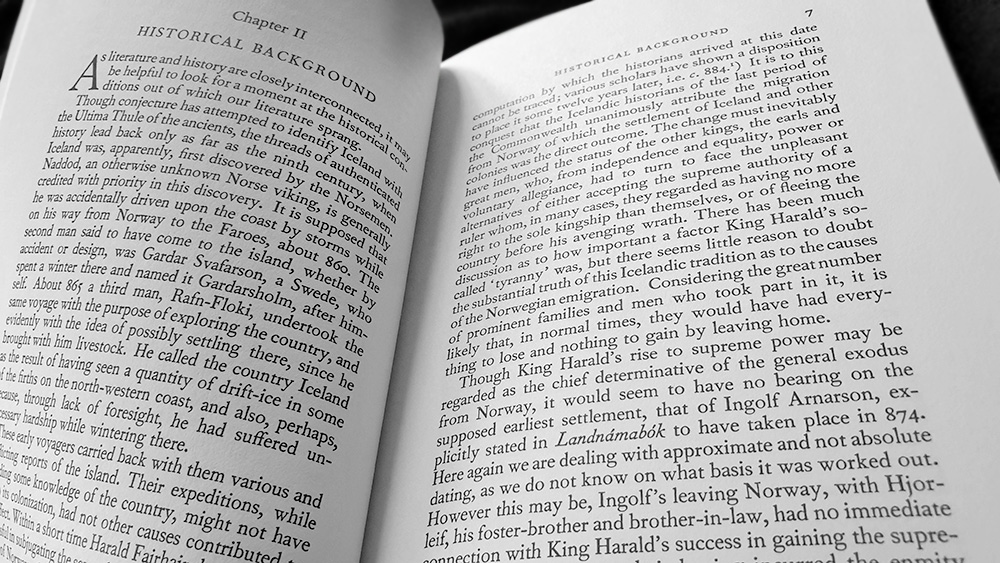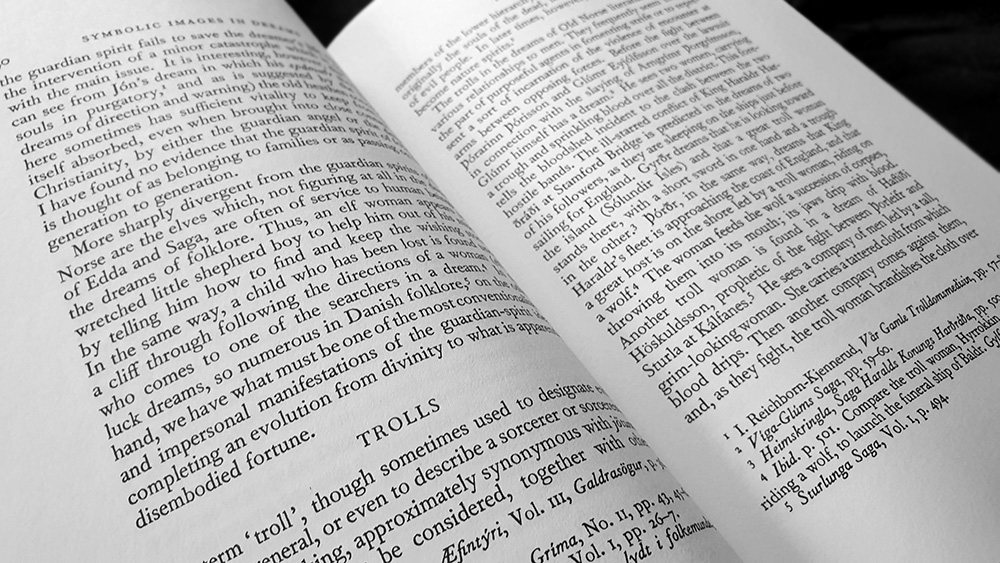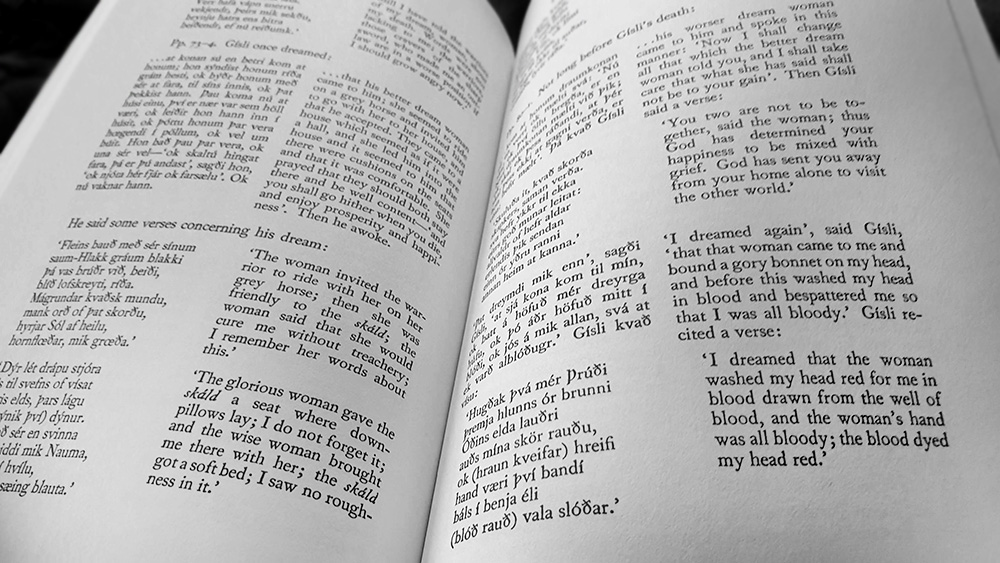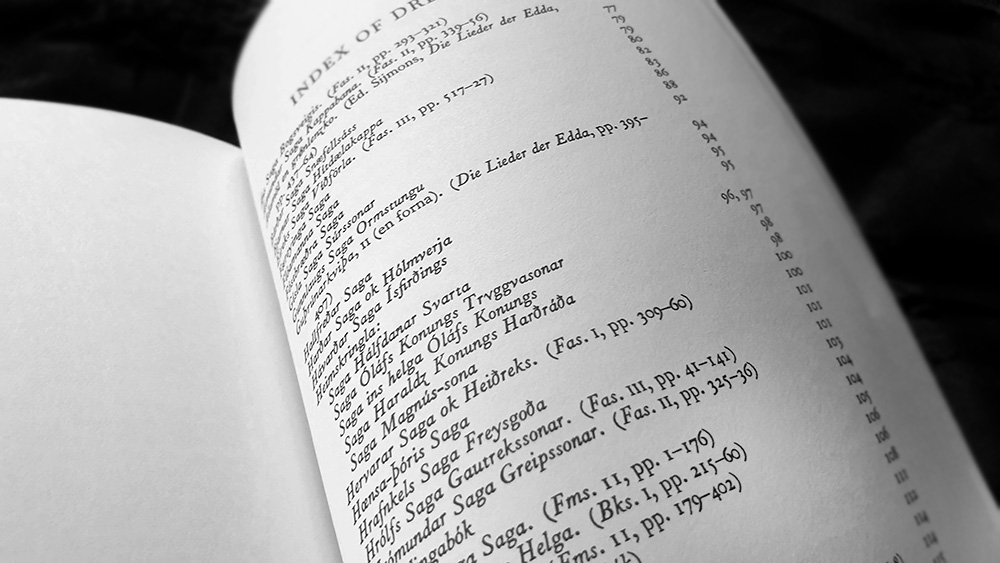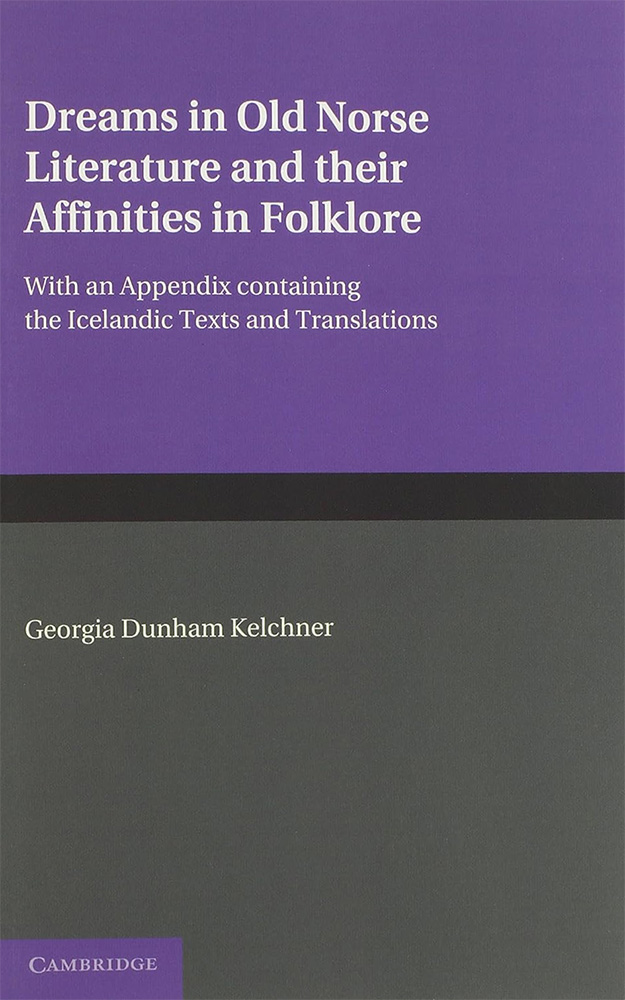 Georgia Dunham Kelchner’s Dreams in Old Norse Literature and Their Affinities in Folklore.was originally published in 1935, and this 2013 edition by Cambridge University Press marks its first ever printing as a paperback. The result of research gathered during her seven years studying at Girton College, Cambridge, under the direction of Dame Bertha Phillpotts, Kelchner’s landmark work examines the role of dreams in Old Norse literature. Of particular note is how the concepts of dreams evolved with the coming of Christianity, with Kelchner noting parallels and changes in later post-conversion folklore to further inform an understanding of the importance of dreams to the pre-conversion Norse.
Georgia Dunham Kelchner’s Dreams in Old Norse Literature and Their Affinities in Folklore.was originally published in 1935, and this 2013 edition by Cambridge University Press marks its first ever printing as a paperback. The result of research gathered during her seven years studying at Girton College, Cambridge, under the direction of Dame Bertha Phillpotts, Kelchner’s landmark work examines the role of dreams in Old Norse literature. Of particular note is how the concepts of dreams evolved with the coming of Christianity, with Kelchner noting parallels and changes in later post-conversion folklore to further inform an understanding of the importance of dreams to the pre-conversion Norse.
Kelchner categorises the dreams found in Old Norse literature and folklore into three classes: dreams of adversity and prosperity, dreams containing symbolic imagery, and dreams in which living or dead persons appear to the dreamer. She spreads her work across just seven chapters, with the largest being the fourth, fifth and six ones, in which she catalogues the various images that appear in the dreams. Following an introduction, curiously titled Chapter 1, Kelchner provides a brief five page-chapter of historical context, followed by an equally scant chapter on the two overriding themes found across the corpus of Norse oneirism, adversity and prosperity, with considerably more of these dreams dealing with trouble than they do with good fortune. She notes that the source of adversity differs between the dreams recorded in Old Norse literature and later folklore, with the former often involving conflicts between people, whereas the latter features the predations of supernatural forces (such as spirits of the dead) and natural ones too, such as famine and epidemics.
The fourth chapeter, Symbolic Images in Dreams, is the book’s longest entry and documents the various entities encountered, each with their own section. This makes for an effective dream bestiary, if you will, and covers fetches, guardian spirits (such as hamingja, dísir and spamadr), trolls, and the gods; with Kelchner noting that few of the Norse gods appear in connection with dreams, with even someone like Óðinn being absent from any dream experienced by god or human.
While the various supernatural figures that appear in these dreams might have some inherent allure, chapter five reveals some unexpected delights in its overview of the various material objects that appear in dreams, often weighted with broader cultural significance than their mundanity might suggest. There’s visualisations of family trees as literal trees, or children being represented by an arm ring that breaks, or the missing toes of their father. This use of symbolic objects in which sign intersects with signifier makes a fitting correlation with the creative use of kennings in Norse literature in which skalds would blend metaphor and metonymy.
The main content of this book runs to only 76 of its 154 pages, with the remainder being filled with a bibliography and an extensive appendix of source texts and their translations. The presence of this 66 page appendix accounts for the lack of any in-body quotes within the primary section of the book, with Kelchner merely describing each dream instance and never giving the actual wording as they appear in the texts. Whilst this does have the benefit of keeping the pace prompt and the page count low, it can also, nevertheless, make everything run together, with the summary she provides being divorced from the vivid wording of the originals. With that said, compiling the sources into a comprehensive appendix makes for a valuable source, especially as each reference is presented side by side in both Old Norse and English.
In a similar fashion, Kelchner is pretty light on analysis, with the dreams within each category being presented as little more than an info-dump, with few of the specific dreams getting any deeper consideration. What this ‘just the sources’ approach does have going for it is the showcase it provides of dream accounts in Old Norse culture, with the concatenation of over 100 dreams from different sagas revealing a rich diversity of imagery, and one that speaks to the thematic and symbolism-rich lexicon embedded within the culture.
Published by Cambridge University Press
